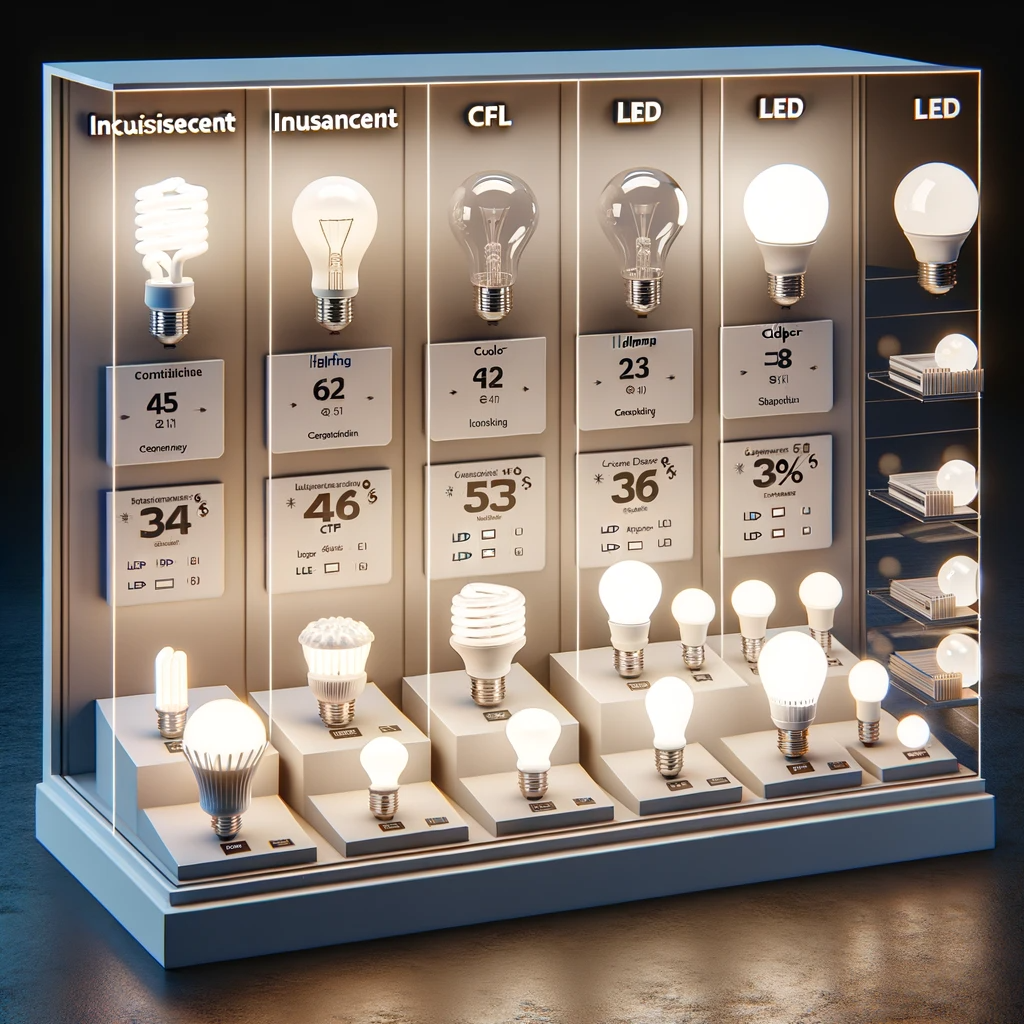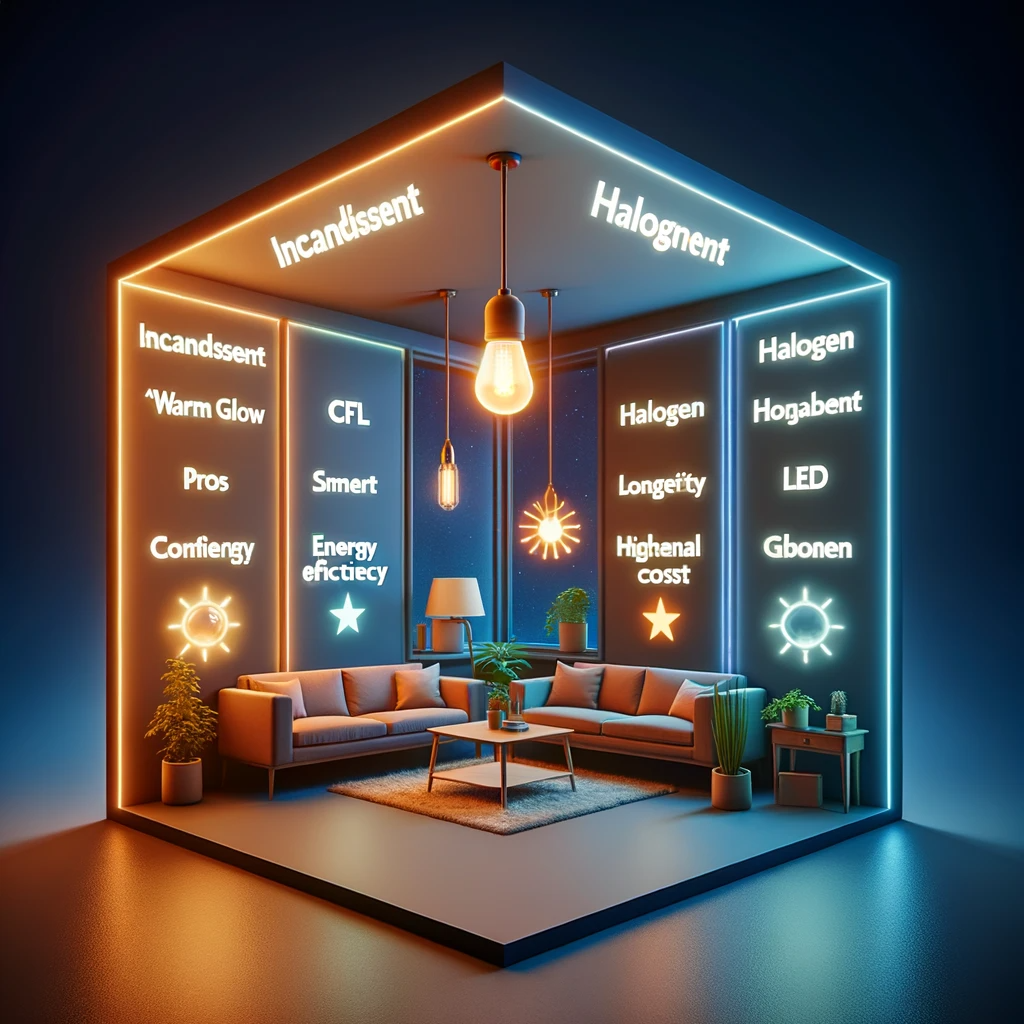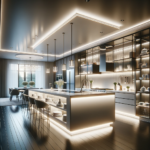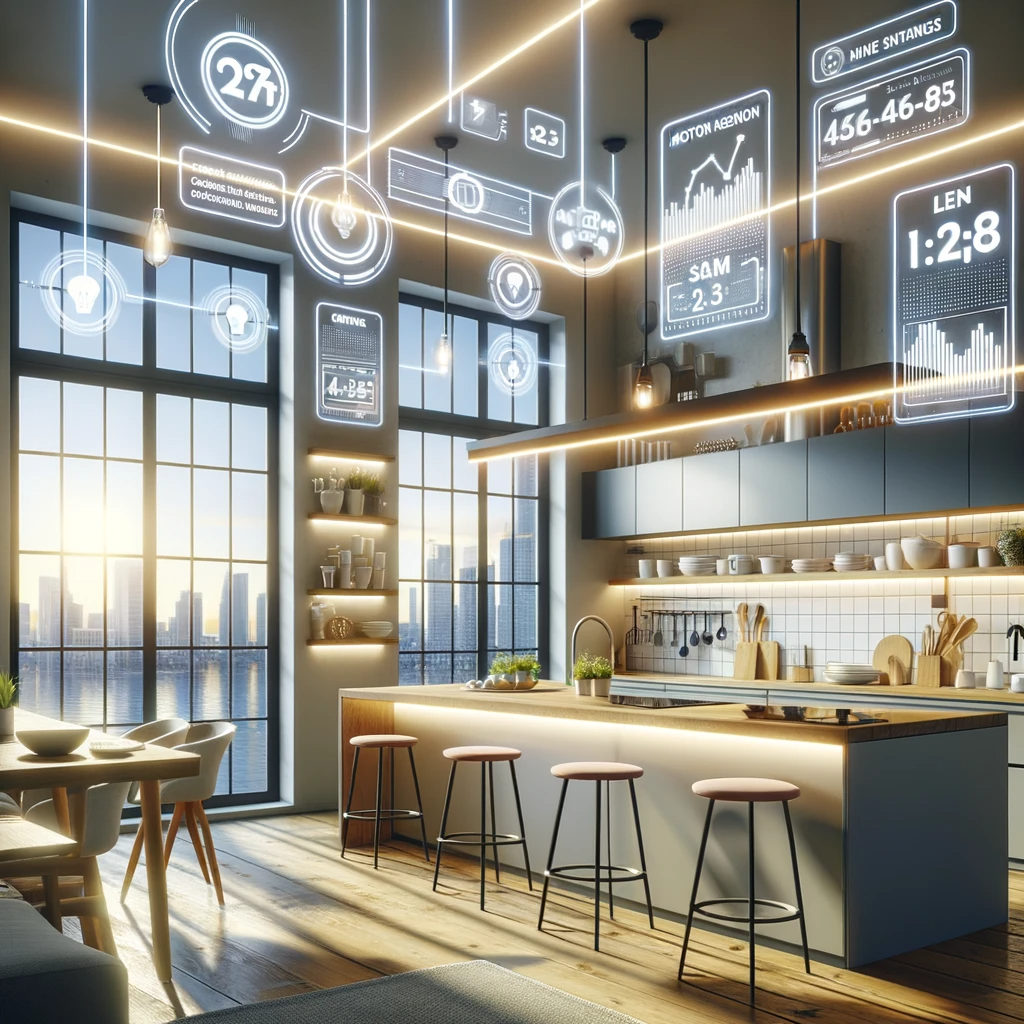Introduction

Lighting plays a crucial role in our daily lives, providing illumination and enhancing the ambiance of our homes, workplaces, and public spaces. It is an essential element that affects our mood, productivity, safety, and overall well-being. Understanding the different types of lighting bulbs available in the market is important for making informed decisions about which ones to use in different settings.
The Importance of Lighting in Our Daily Lives

Lighting is not just about brightening up a space; it serves various purposes that go beyond mere visibility. Adequate lighting enables us to perform tasks with ease and accuracy, whether it’s reading a book or preparing a meal.
It also contributes to creating comfortable environments for relaxation and socializing. Moreover, lighting has a significant impact on our overall health and well-being.
Exposure to natural light during the day helps regulate our sleep-wake cycle by influencing the production of hormones like melatonin. In contrast, insufficient or improper lighting can lead to eye strain, fatigue, and even affect our mental health.
Overview of the Three Types of Lighting Bulbs: Incandescent, CFL, LED
There are three primary types of lighting bulbs commonly used today: incandescent bulbs, compact fluorescent lamps (CFL), and light-emitting diodes (LED). Each type has its own unique characteristics when it comes to energy efficiency, lifespan, light quality, environmental impact, and cost. Incandescent bulbs are the traditional choice known for their warm glow but are less energy-efficient compared to CFLs and LEDs.
CFL bulbs use gas discharge technology to produce light more efficiently than incandescent bulbs while lasting longer. On the other hand, LED bulbs utilize semiconductor materials that emit light when an electric current passes through them.
They offer exceptional energy efficiency with long lifespans but can be initially costly. Understanding these differences will help us make informed decisions when selecting lighting bulbs for different purposes, taking into account factors such as energy consumption, environmental impact, cost-effectiveness, and the desired quality of light output.
Incandescent Bulbs

History and Background
Thomas Edison invented incandescent bulbs in the late 19th century. They revolutionized the way we light our homes and workplaces.
Their creation marked a significant milestone in the history of lighting technology. By heating a filament inside a glass bulb, these bulbs emitted light when electricity passed through them.
How they work: heating a filament to produce light
Incandescent bulbs operate by passing an electric current through a thin tungsten filament. The resistance of the filament to the electric current causes it to heat up, reaching temperatures that make it glow brightly.
As a result, visible light is emitted from the bulb, illuminating the surroundings. This process is known as incandescence.
Pros of incandescent bulbs
The warm and natural light quality produced by incandescent bulbs creates a cozy and inviting atmosphere in any space. Their color rendering ability accurately represents colors without distorting them, making them ideal for tasks that require true color perception, such as art galleries or photography studios.
Additionally, incandescent bulbs are known for their affordability compared to other lighting options. They have low initial costs and are widely available at affordable prices.
Moreover, these bulbs offer dimmable options, allowing users to adjust brightness levels according to their preferences or needs. Dimming not only sets different moods but also helps conserve energy when less illumination is required.
Cons of Incandescent Bulbs
Low energy efficiency and high electricity consumption
Incandescent bulbs have low energy efficiency as the majority of the energy they consume is wasted as heat rather than light. When electricity flows through the filament, it heats up and produces light, but a significant portion of this energy is lost in the form of heat. This inefficiency results in higher electricity bills for consumers.
Short lifespan
Incandescent bulbs have a relatively short lifespan, necessitating frequent replacements. The filament within these bulbs tends to burn out quickly, leading to diminished functionality. With an average lifespan ranging from 750 to 2,000 hours, incandescent bulbs may require replacement multiple times within a year in household settings with regular usage.
Frequent replacements needed, leading to higher long-term costs
Due to their short lifespan, incandescent bulbs often require frequent replacements. This frequent replacement cycle leads to higher long-term costs for consumers. The cost of purchasing new bulbs regularly accumulates over time, adding an additional financial burden compared to more durable lighting alternatives.
Environmental impact
The environmental impact of incandescent bulbs primarily stems from their high carbon emissions due to energy inefficiency. Since a significant amount of electricity consumed by these bulbs is transformed into heat rather than useful light, more power generation is required.
This increased demand for energy contributes to higher carbon emissions and further exacerbates environmental issues such as climate change. Note: The following sections continue with each subtopic mentioned in the initial request.
Overview and working principle
Compact Fluorescent Lamps (CFL) utilize a combination of gas discharge and phosphor coating technology. These lamps consist of a glass tube that contains a small amount of mercury vapor and argon gas.
When an electric current passes through the tube, it excites the mercury atoms, causing them to emit ultraviolet (UV) light. This UV light then interacts with the phosphor coating on the inner surface of the tube, which in turn converts it into visible light.
Combination of gas discharge and phosphor coating technology
The unique combination of gas discharge and phosphor coating technology employed by CFL bulbs allows them to generate significantly more light output per watt compared to traditional incandescent bulbs. The process starts with the electricity passing through the ballast, which regulates voltage and current flow.
As electricity flows through the tube, electrons collide with mercury atoms, exciting them and leading to UV light emission. The phosphor coating inside the tube absorbs this UV light and re-emits it as visible light across a broad spectrum.
Pros of CFL bulbs
CFL bulbs come with several advantages that make them an attractive lighting option for many consumers.
High energy efficiency, using up to 75% less electricity compared to incandescent bulbs
One significant advantage is their high energy efficiency. CFL bulbs only require about 25% of the energy consumed by traditional incandescent bulbs to produce an equivalent amount of light output. This translates into substantial energy savings over time, resulting in lower electricity bills.
Longer lifespan compared to incandescent bulbs
Another key benefit is their longer lifespan. CFL bulbs have an average lifespan ranging from 8,000 to 15,000 hours, significantly outlasting incandescent bulbs that typically last around 1,000 hours. This longevity reduces the frequency of bulb replacements, saving both time and money for consumers.
Availability in various shapes and sizes
CFL bulbs are available in a wide range of shapes and sizes, making them suitable for various lighting fixtures and applications. Whether you need a compact bulb for a small table lamp or a larger one for overhead lighting, CFL bulbs offer flexibility in meeting diverse lighting needs.
Subtitle: Illuminating the Way to Energy Efficiency
CFL bulbs employ gas discharge and phosphor coating technology to generate light efficiently. They consume up to 75% less electricity compared to incandescent bulbs while having a significantly longer lifespan.
Additionally, their availability in various shapes and sizes allows for versatile usage across different settings. Considering these benefits, CFL bulbs emerge as an environmentally friendly and cost-effective option for those seeking energy-efficient lighting solutions.
Cons of CFL Bulbs
Mercury content
CFL bulbs contain a small amount of mercury, a toxic element that can be harmful to human health and the environment. If a CFL bulb breaks, it releases mercury vapor, which requires careful cleanup procedures to prevent exposure. The presence of mercury in these bulbs raises concerns about improper disposal and the potential for the release of mercury into soil and water sources.
Environmental concerns during production, usage, and disposal
The production process of CFL bulbs involves various environmental concerns. It requires more energy compared to incandescent bulbs due to the complex manufacturing process involved in creating the combination of gas discharge and phosphor coating.
Additionally, the disposal of CFL bulbs poses environmental challenges as they should not be thrown in regular trash due to their mercury content. Proper recycling or disposal methods are necessary to ensure minimal harm to the environment.
Initial cost
CFL bulbs come with a higher upfront cost compared to traditional incandescent bulbs. While they may offer long-term energy savings, some consumers may find it difficult or unaffordable to invest in these costlier options initially. This can pose a barrier for people looking for affordable lighting solutions.
Higher upfront cost compared to incandescent bulbs
Compared to incandescent bulbs that are widely available at low costs, CFL bulbs can still be relatively expensive despite their energy-efficient advantages. The price difference might dissuade budget-conscious customers from considering CFLs as their preferred lighting choice.
Warm-up time
One drawback of CFL bulbs is their warm-up time before reaching full brightness. When switched on, they take a few seconds or more to achieve maximum illumination level which may be inconvenient in situations where instant bright light is desired.
Delayed brightness upon switching on
A slight delay in achieving full brightness upon switching on can be experienced with CFL bulbs. This can be a minor inconvenience, especially in areas where immediate illumination is essential.
Conclusion
While CFL bulbs offer energy efficiency and longer lifespan compared to incandescent bulbs, they do come with certain drawbacks such as mercury content, initial cost, warm-up time, and delayed brightness. These concerns highlight the importance of proper handling and disposal methods for CFL bulbs to minimize environmental impact.
Despite the drawbacks, it is worth noting that CFLs remain a viable alternative for those seeking more energy-efficient lighting solutions.
As technology continues to advance, newer lighting options like LED bulbs have emerged as an even more efficient and eco-friendly choice. By considering these pros and cons, individuals can make informed decisions when selecting lighting options that align with their needs and sustainability goals.









